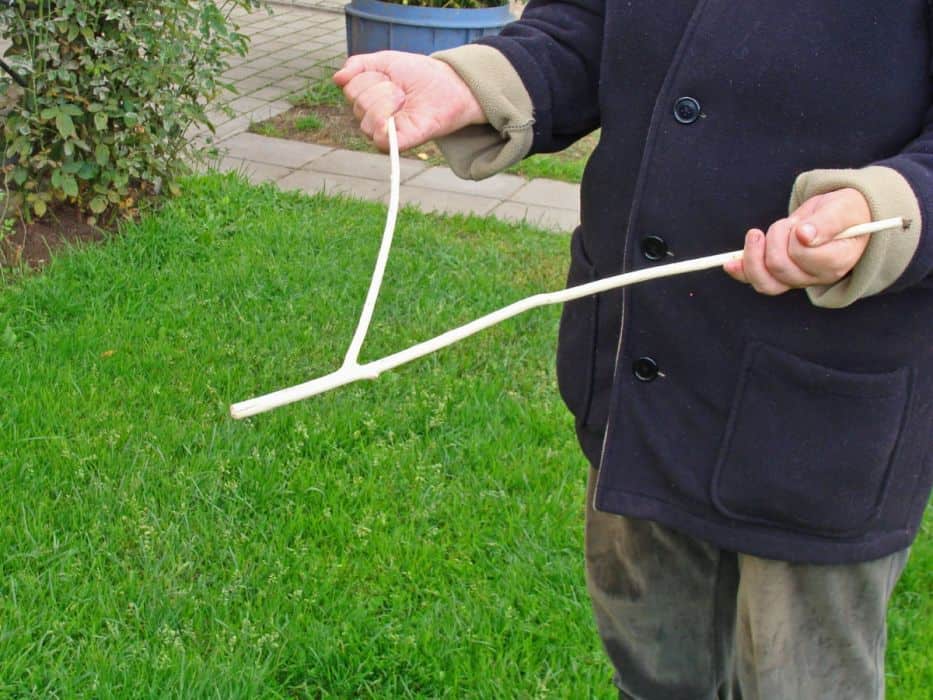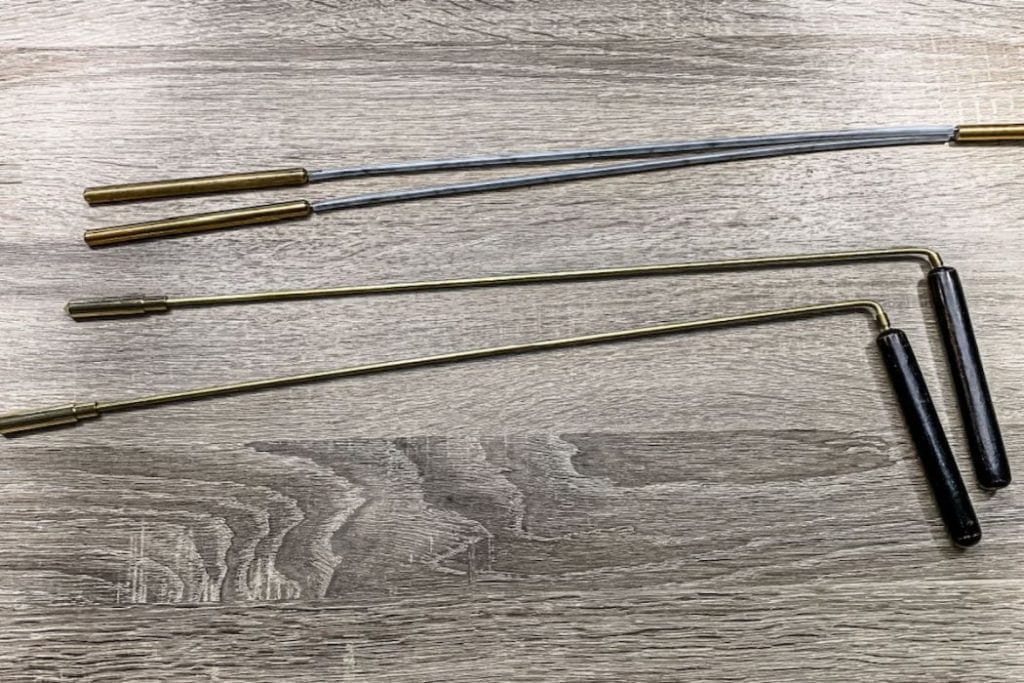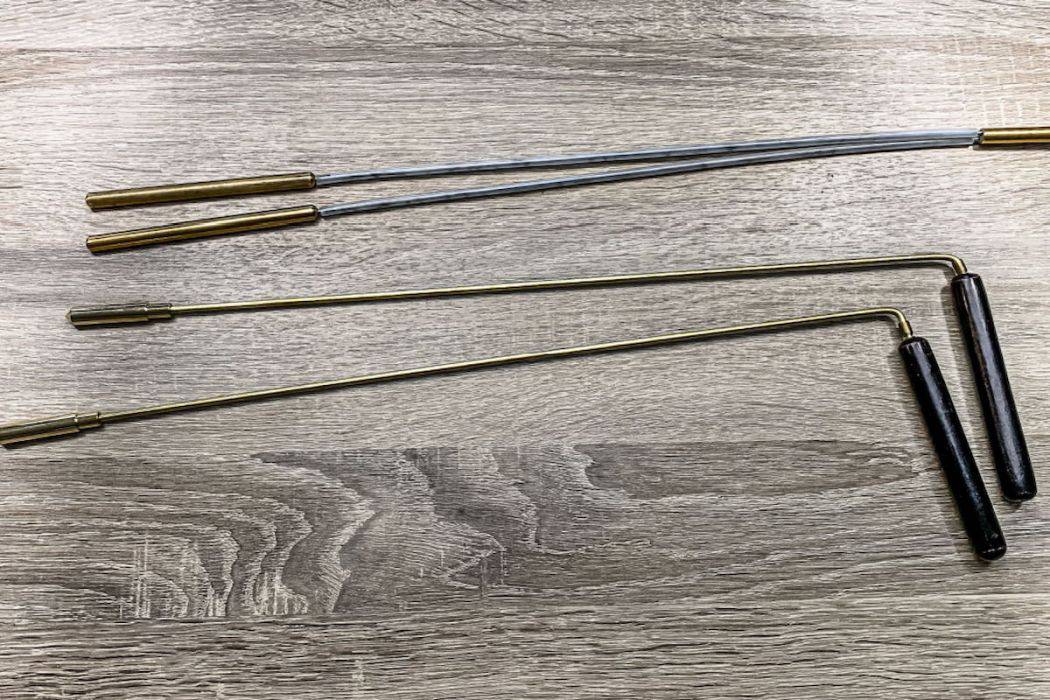The act of dowsing originated in Germany in the 16th century when it was used to find metals underground. Since then, it has struggled through many trials and tribulations.
It can be a very rewarding hobby and thankfully, it has survived the test of time.
However, if you are new to the past time, it might be hard to find information about it. So here, we are going to cover the frequently asked “why do dowsing rods cross?” question.
Quick answer:
Dowsing rods cross when they are near water or other objects. Traditional dowsing rods made of wood will not cross but point downwards when water is found. L-shaped metal rods will cross to indicate water.
Let us jump right into the details!
Learn more about dowsing in our complete guide here.
Why Do Dowsing Rods Cross?
To put it simply, dowsing rods cross when water (or something else) is found. Unfortunately, though, it is not quite as easy to understand as that.
Why? Because different types of dowsing rods do different things!
We are going to look at Y-rods and L-rods here to see whether they denote found items by crossing themselves.
Y-Rods: Do They Cross?
In the past, the Y-rod was the most popular dowsing rod. As you might imagine from its name, this type of rod sported a forked Y shape.
The Perfect Y-Rod Material
Traditionally, they were made from a branch pulled from a tree or a bush. Whether the species of tree or bush it came from mattered is up for debate. However, it is well documented that some dowsers prefer other plants to others.

Commonly, witch-hazel is the preferred Y-rod material in the United States of America and hazel twigs are preferred in Europe. Although, people did still use branches from willow or peach trees as well.
The Y-Rod Method: To Cross or Not to Cross
Once the Y-rod has been fashioned, you hold the two ends of the fork in each hand. The stem (i.e. the straight, vertical line of the “Y”) points ahead, away from your body.
As you walk slowly across the land, the Y-rod will dip, twitch, or raise itself if there is water or minerals underfoot.
Since this type of dowsing rod is fixed and only one stem is actively searching for items and/or water sources, the crossing behavior is impossible.
L-Rods: Do They Cross?
In more modern dowsing times, the L-rod is favored. They must be used in pairs and can are typically bought from specialist stores, rather than fashioned from home.
You can already guess that they are shaped like the letter L!
The Perfect L-Rod Material
L-rods tend to be made from steel, copper, or other metals when they have been purchased from a professional shop. But this isn’t always the case.

Modern-day dowsers have come to accept that they can fashion make-shift rods from old wire coat hangers and other wire materials. Not to mention that both plastic and glass rods have snuck into the market and quickly become accepted.
The L-Rod Method: To Cross or Not to Cross
If you decide to use the L-rod method for your dowsing expeditions, you need to hold one in each hand. You should hold onto the smaller part of the L shape and let the two longer stems stick out, pointing away from your body (similar to the Y-rod method).
As soon as the L-rods find something they will cross over each other, making an X shape (or something akin to an X at the very list).
However, that isn’t all!
These dowsing rods tend to point in opposite directions if something like a water pipe is found. This is meant to depict the placement and orientation of the pipe itself. Pretty handy in our opinion.
How to Prevent Inadvertent Rod Crossing
It has to be said that, at times, your rods may cross because of you and not to do with anything you might have found.
Our bodies — specifically, our hands, in this case — make involuntary movements all the time. This can cause the L-rods or Y-rods to dip fairly dramatically if you’re not careful.
While we can’t stop these involuntary movements, there are some ways to prevent inaccurate dowsing and inadvertent rod crossing. Make sure you stick to the following tips and you should be well on your way to accurate dowsing:
- Hold the rods properly — They should be held at arm’s length from your body. If you’re using Y-rods, try to hook your pinky finger under it to ensure ultimate stability.
- Calm your breath — As long as you keep breathing steadily, your involuntary hand movements shouldn’t disrupt your activity too much.
- Keep your hands light — Even though it might seem logical to tense up to stop unwanted movements, your dowsing rods need to be able to float freely. So, keep your hands relaxed and calm.
The Bottom Line
Dowsing rods are not only used to find water, they can be used for a variety of objects. Even unmarked grave hunting.
You’re pretty much an expert on “why do dowsing rods cross” now! All it takes is a bit of practice and you’ll be ready to take the dowsing world by storm!




